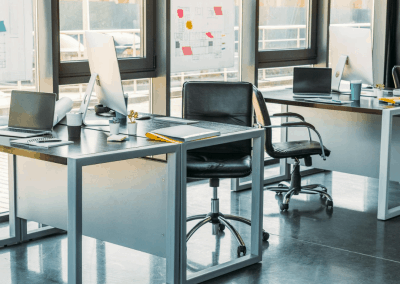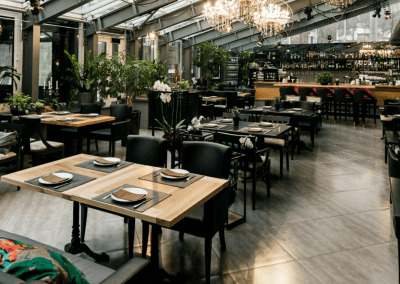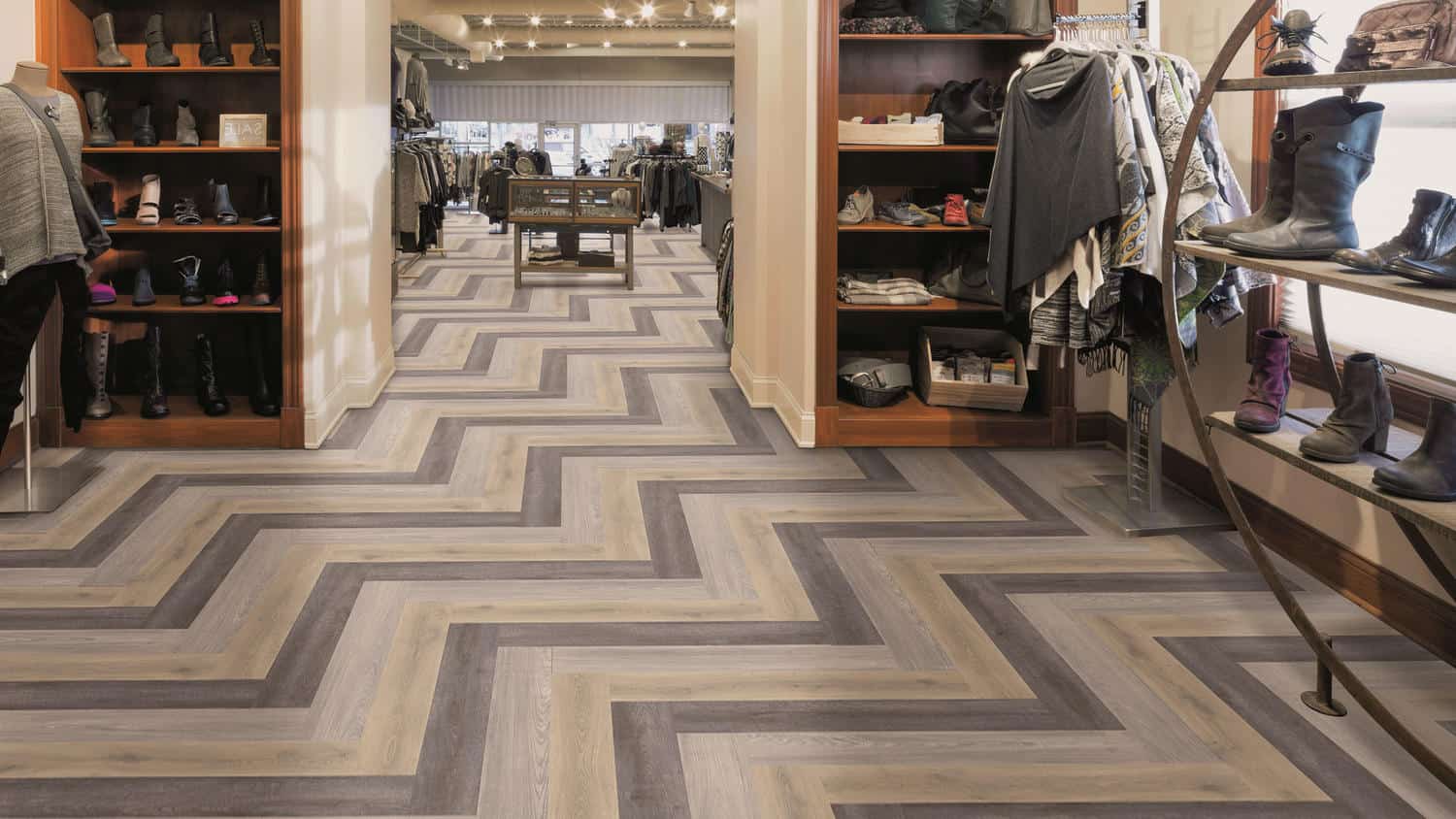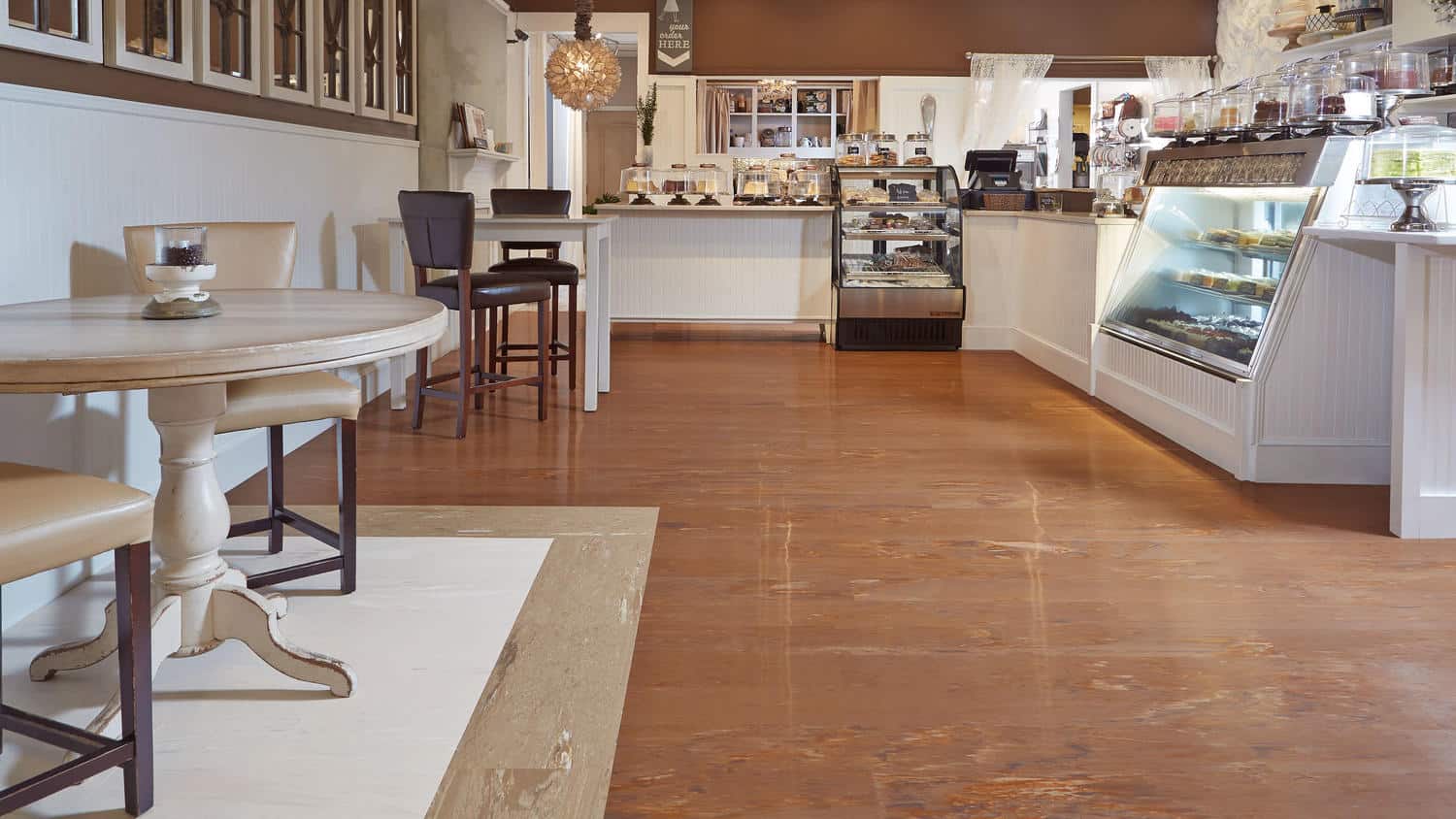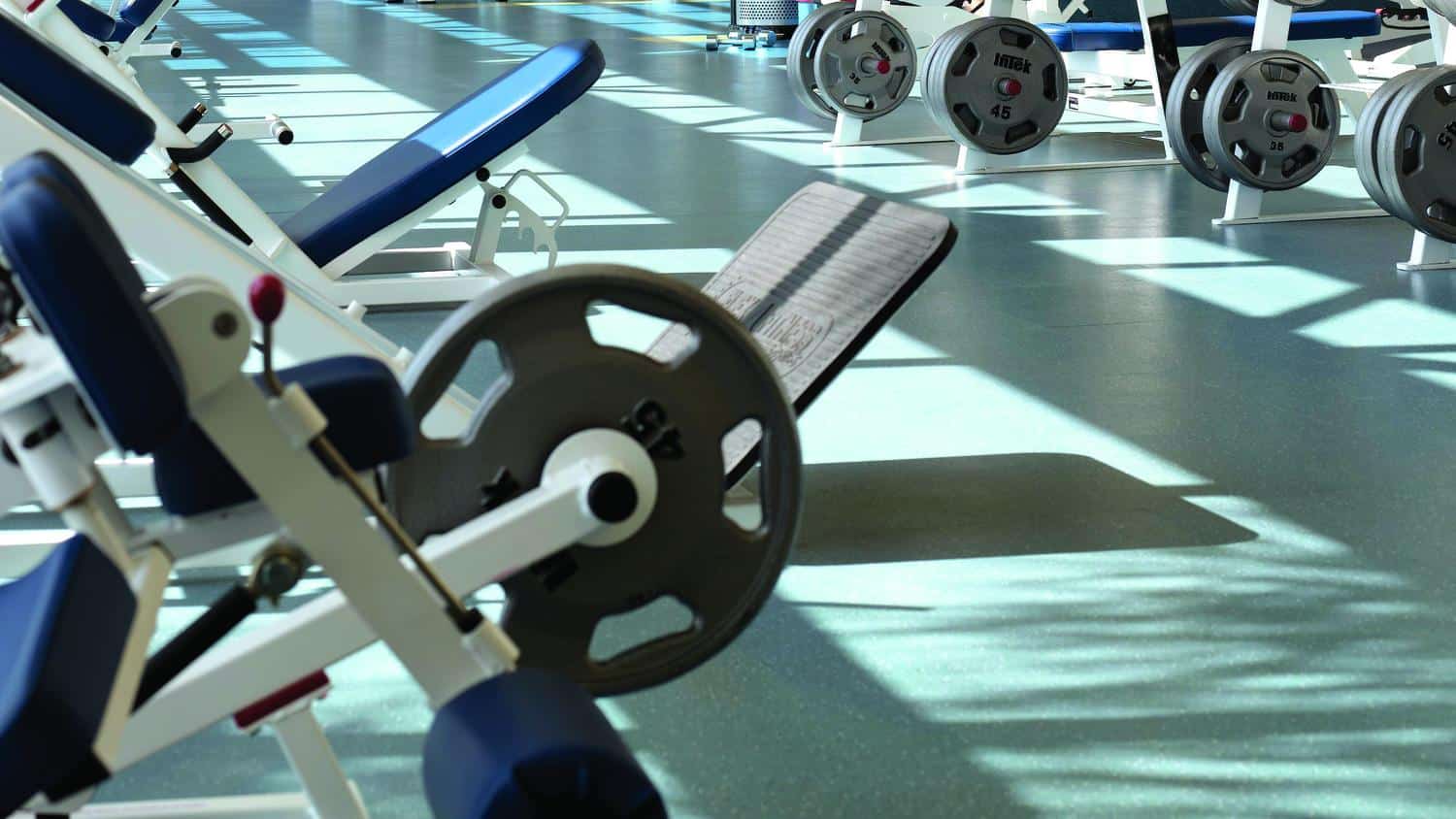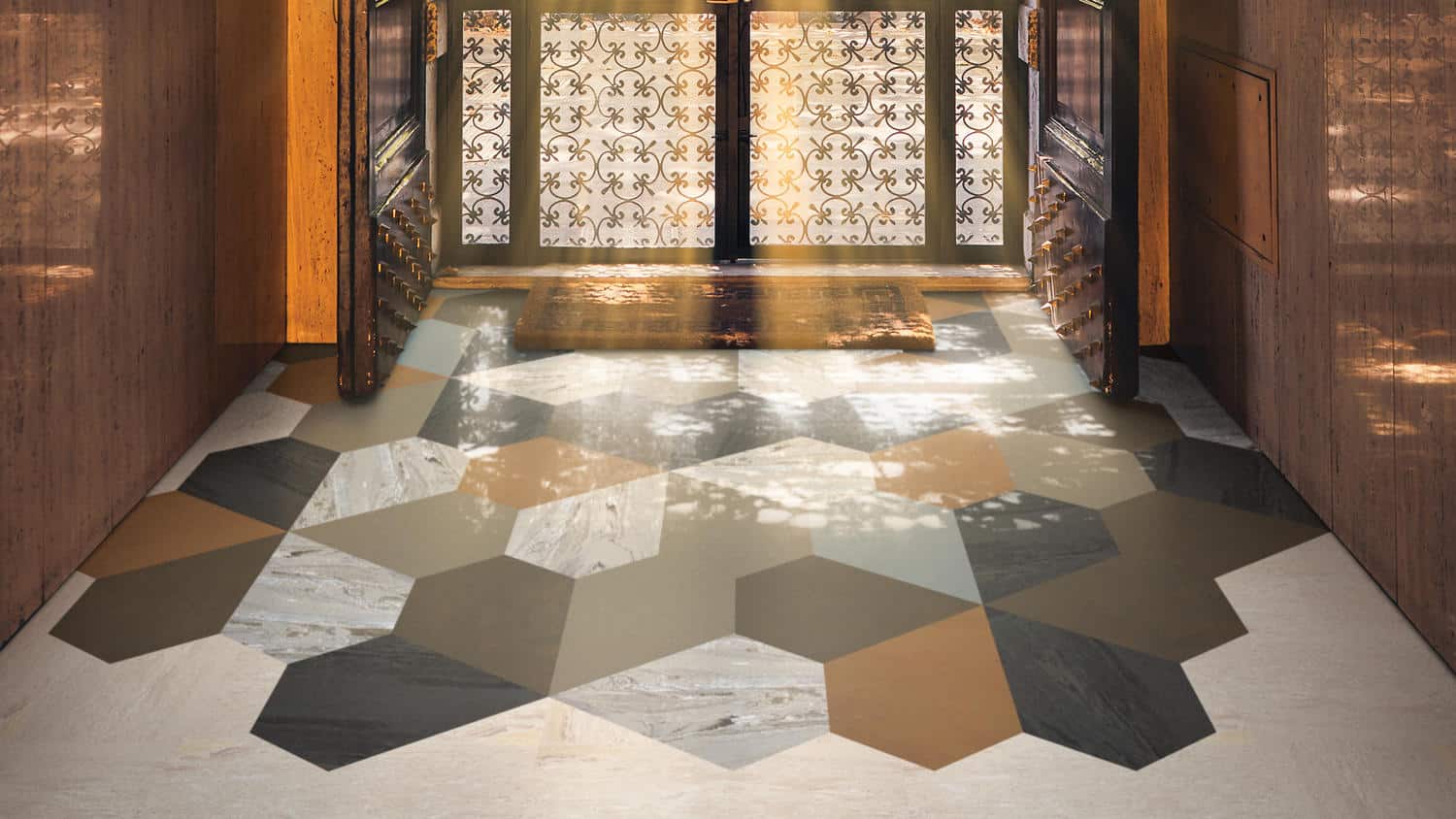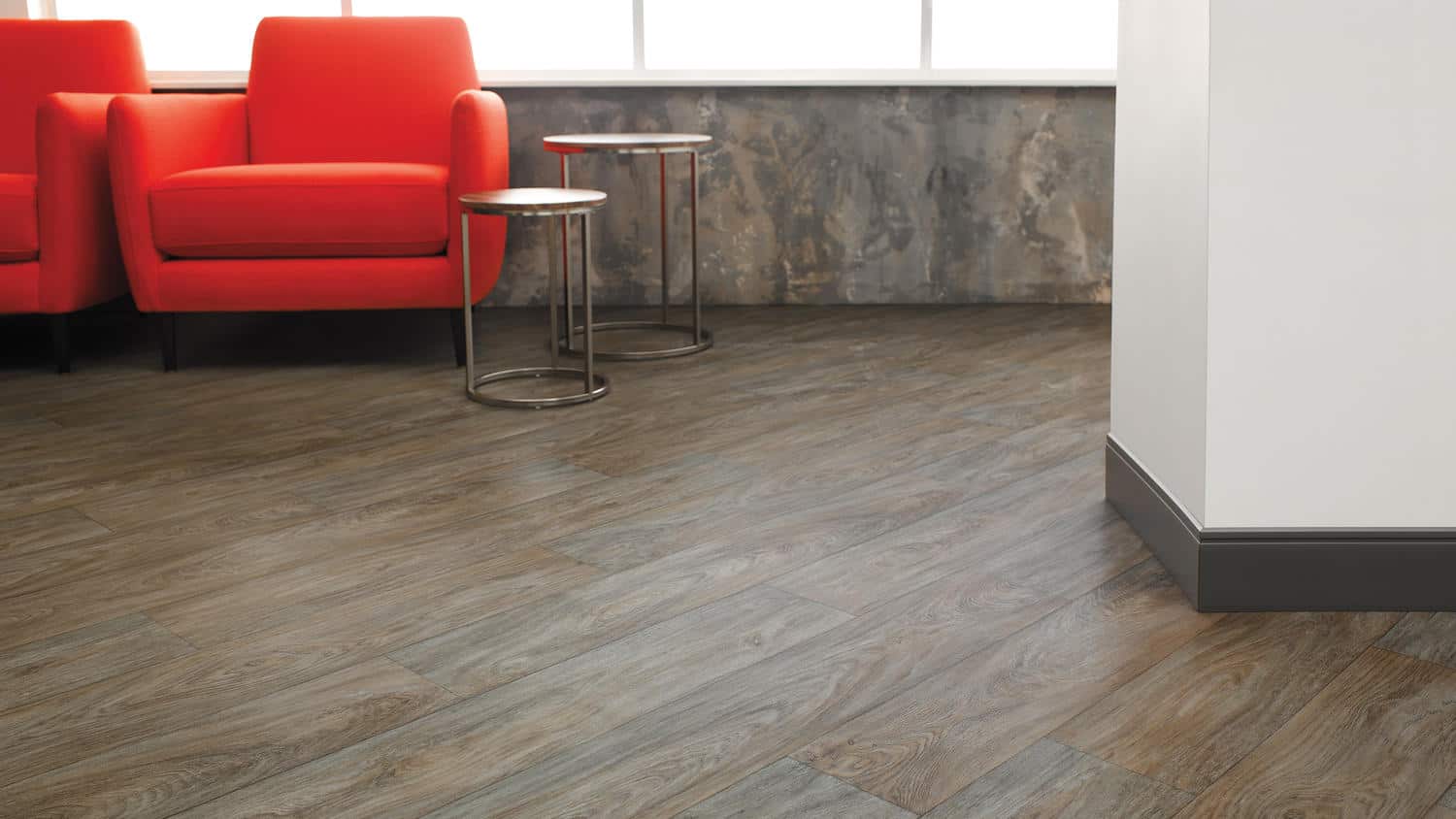
Every business has unique needs when it comes to floors. It can be overwhelming to consider all of the flooring options that are available, but it is possible to narrow down all of the alternatives and make the best choice for a particular space. It can help to make a list of company needs in order to find the optimal flooring match.
Flooring Factors to Consider
Above all, flooring in commercial spaces needs to be functional. So, first, think about how each area in a space will be used. Will it be subjected to heavy foot traffic and/or a lot of spills? Durability comes into play when considering how the flooring material stands up to repetitive use and cleaning. Don’t forget to consider building codes, ADA compliance, floor load bearing requirements, and the acoustics of the space. If you get overwhelmed by the technical aspects of these things, we can help.
Next, when it comes to aesthetics, contemplate factors such as lighting, how often an area will be exposed to the public, and how different types of flooring will complement its surroundings.
Furthermore, take the time to consider the cost of each type of flooring and weigh whether or not extra features are worth the additional expense. Take into consideration not only the initial price, but also any ongoing maintenance and/or future replacement costs.
Lastly, give some thought to whether or not each flooring option is eco-friendly (a “green” floor will require less energy to produce, use, and dispose of) and how it will affect the planet (is it non-toxic, recycleable, and responsibly manufactured?) and the health of visitors and workers.
To help in the quest to find the best flooring option for a specific commercial space, we’ve compiled a list of some great options and our thoughts on each.
Concrete
We covered everything concrete in another blog post. While it is commonly used in salons, restaurants, and retail, concrete is being increasingly implemented in other types of spaces to bring an industrial/edgy look. Concrete is great for high traffic areas because it can withstand high amounts of abuse. At the minimum you should consider these pros and cons before going with concrete floors:
Concrete Floor Benefits
- Customizable color, texture, patterns, and finish
- Durable & abrasion resistant
- Resists moisture and stains when sealed
- Easy and minimal maintenance
- Can be very affordable/ tailored to any budget
- Environmentally Friendly
- Reduces allergens
- Can be heated with a radiant system
- Polished finishes reflect light and brighten indoor spaces
Concrete Floor Drawbacks
- Must be resealed occasionally
- May be difficult to patch
- Can be cold, similar to tile or natural stone floors
- Cracking
- Can be slippery when wet, but anti-slip additives can help
- Can produce an echo effect, but absorptive materials can help to muffle unwanted sound
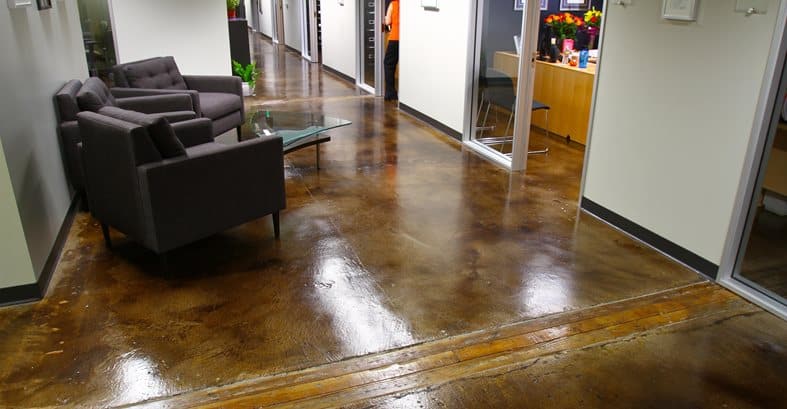
Photo via Concrete Network
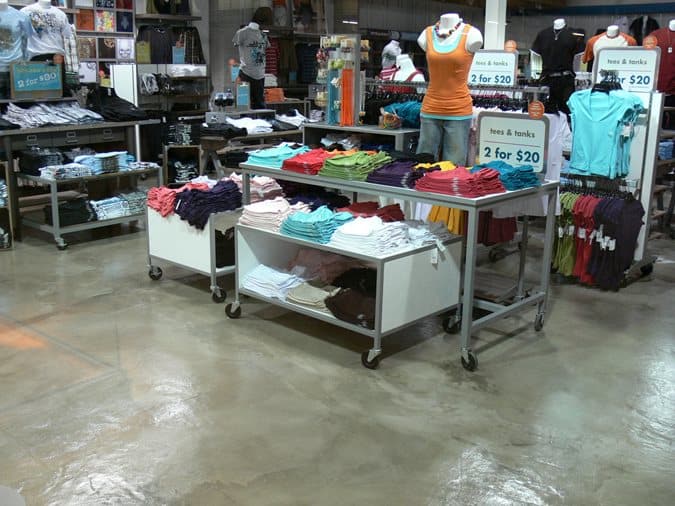
Photo via Concrete Network
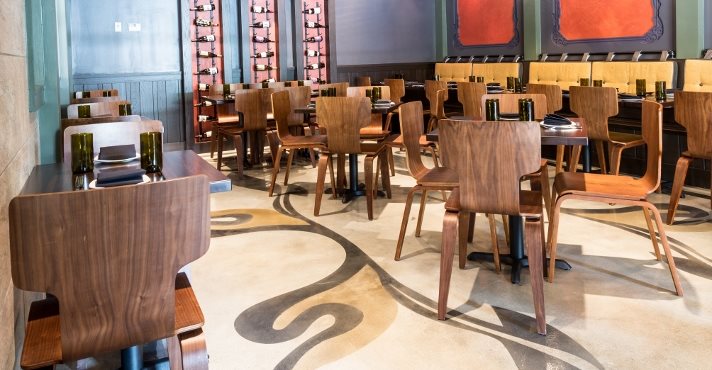
Photo via Concrete Network
Laminate
Most of us have heard of Pergo…but what exactly is laminate flooring? It’s made up of pressed layers (mainly wood) that are fused together. Commercial laminate requires little maintenance and is made to withstand heavy foot traffic. Many laminates replicate the look of hardwood, stone, or tile. There are many types of laminate, including smooth (with various gloss levels), embossed, textured, and distressed. Laminate is the best of several worlds because it is a hybrid floor covering– its tongue and groove installation is similar to and even easier than hardwood, while its tight-jointed top is reminiscent of vinyl flooring. However, even though its price may be similar to vinyl, laminate is made of different materials.
Laminate is easy to clean and scratch resistant. But, since it is made of pressed board it can chip. Regarding durability, AC4-AC5 rated laminate floors are recommended for commercial areas (buy the best AC rating the budget will allow). Laminate is minimally affected by sunlight. Overall, laminate reacts less to extremes in humidity than solid wood but it is not a good choice for high-moisture/humidity spaces, such as bathrooms, kitchens, or other places where encounters with wetness will occur. Another downside to consider is that laminate may result in elevated noise levels because it has a poor acoustic profile compared to other types of flooring.
Laminate is sustainable as long as it’s made of wood from sustainable forests or recycled wood fiber. It is typically recycleable and doesn’t require chemicals to clean. Additionally, laminate doesn’t contain any air-damaging chemicals and whatever chemicals that are in laminate tend to stay inside the board. It also meets LEED standards for being eco-friendly.
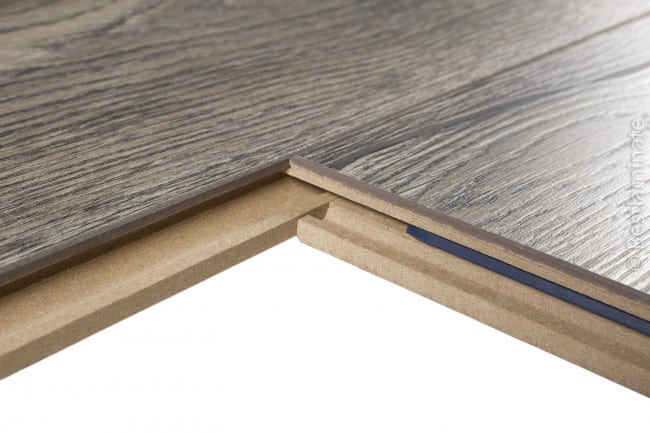
Photo via Best Laminate

Photo Via Build Direct
Tile
With a plethora of styles and colors available, tile design can be endlessly customized to meet the needs of a business. One major advantage of all tile is that if one cracks a single unit can easily be replaced. Ultimately, tile that is rated either a 4 or 5 hardness is best for a commercial or industrial setting.
Ceramic, Porcelain, & Quarry
Ceramic tile is a good option for high-traffic areas because it is hard/durable, stain resistant, easy to clean, and still fairly affordable. While porcelain and ceramic belong to the same family, they do have some minor differences (porcelain is more expensive but better for areas exposed to moisture). Another option, quarry tile, is the industry standard in commercial kitchens because it is water and slip resistant. Quarry tile is often red, but it can also be brown, gray, or tan.
Natural Stone
Natural stone is inherently eco-friendly and unique. The downside of stone can be that, depending on its porosity, it may need regular sealing, and that some stone scratches or chips easily. Granite and Quartzite are the most durable natural stone flooring products while others, such as marble, can be scratched and don’t retain polish as well.
Grout
Cement-based grouts are good for general use and moderate traffic but latex-based or epoxy grouts are used when extra strength is needed or the grout needs to have added water/chemical/stain resistance.
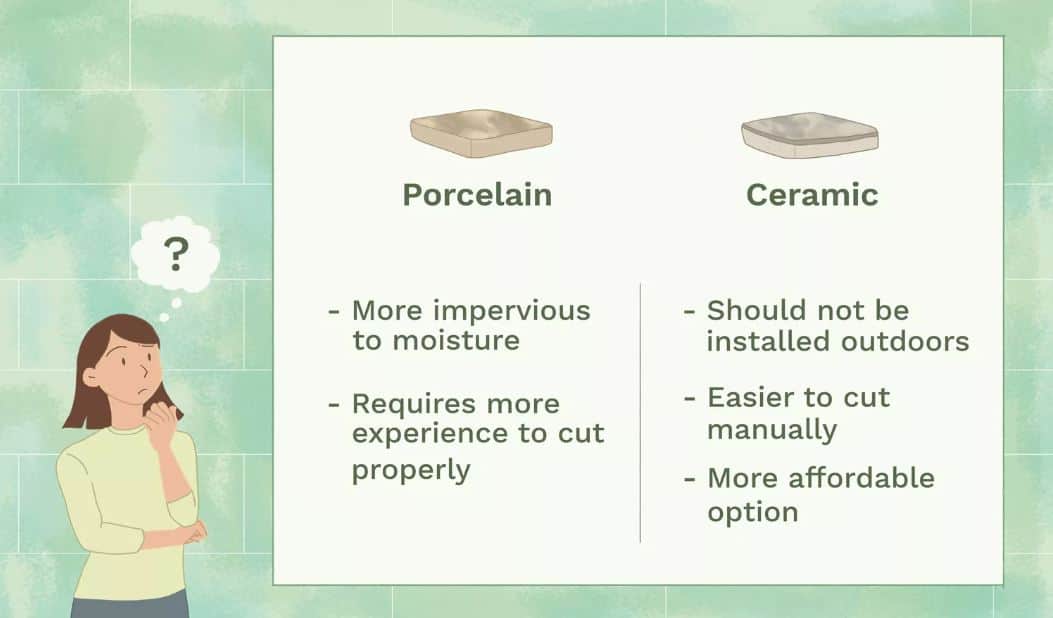
Photo via The Spruce/Catherine Song
Tile Options
- Glazed & Unglazed
- Textured & Untextured
- Wood tile
- Natural Stone (Slate, marble, limestone, travertine, granite, sandstone, quartzite, & onyx)
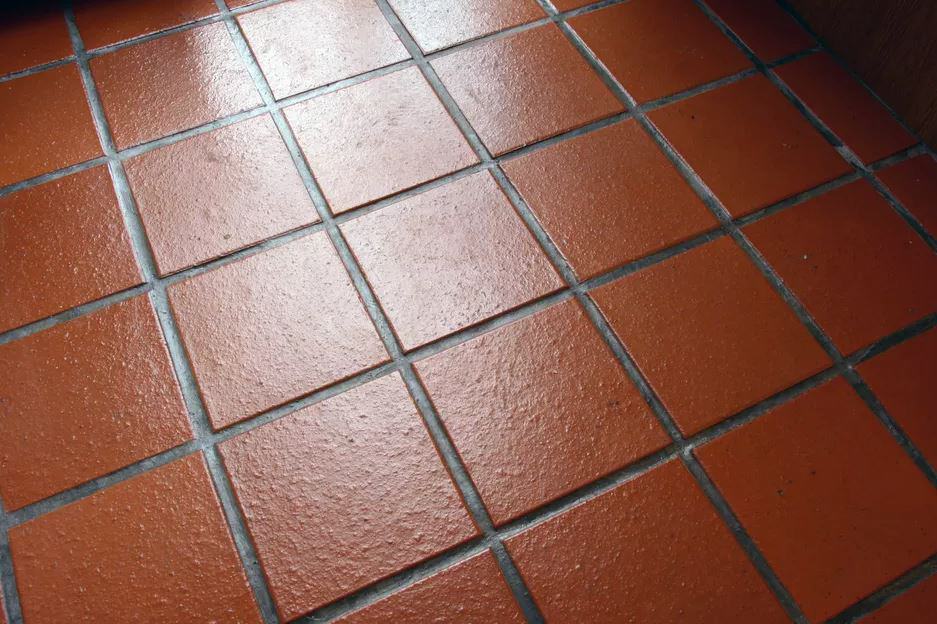
Quarry Tile, Photo via The Spruce
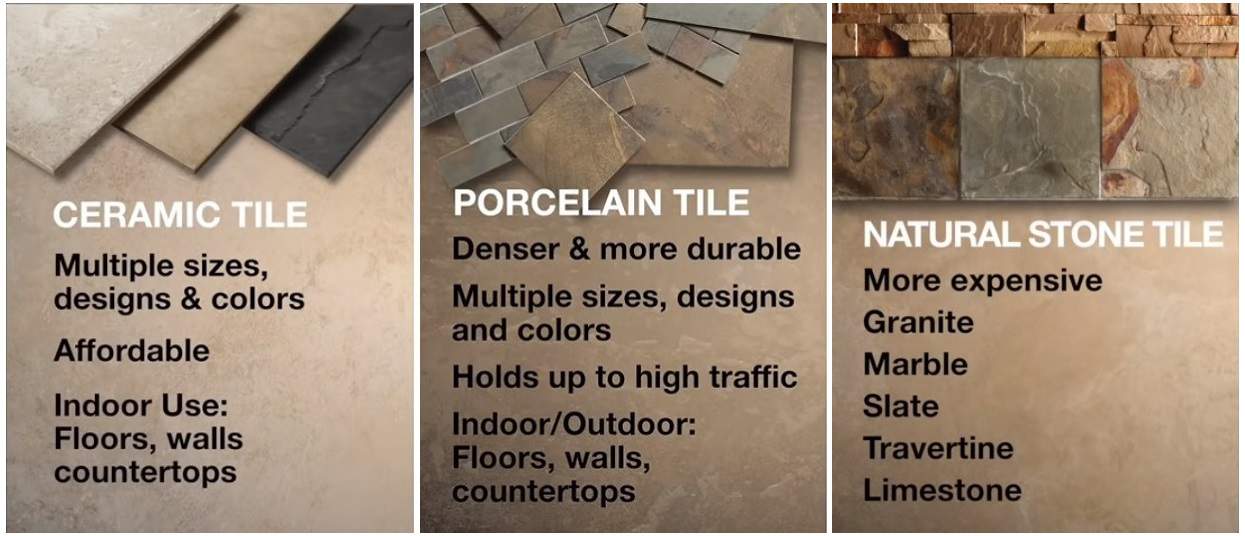
Photo Source
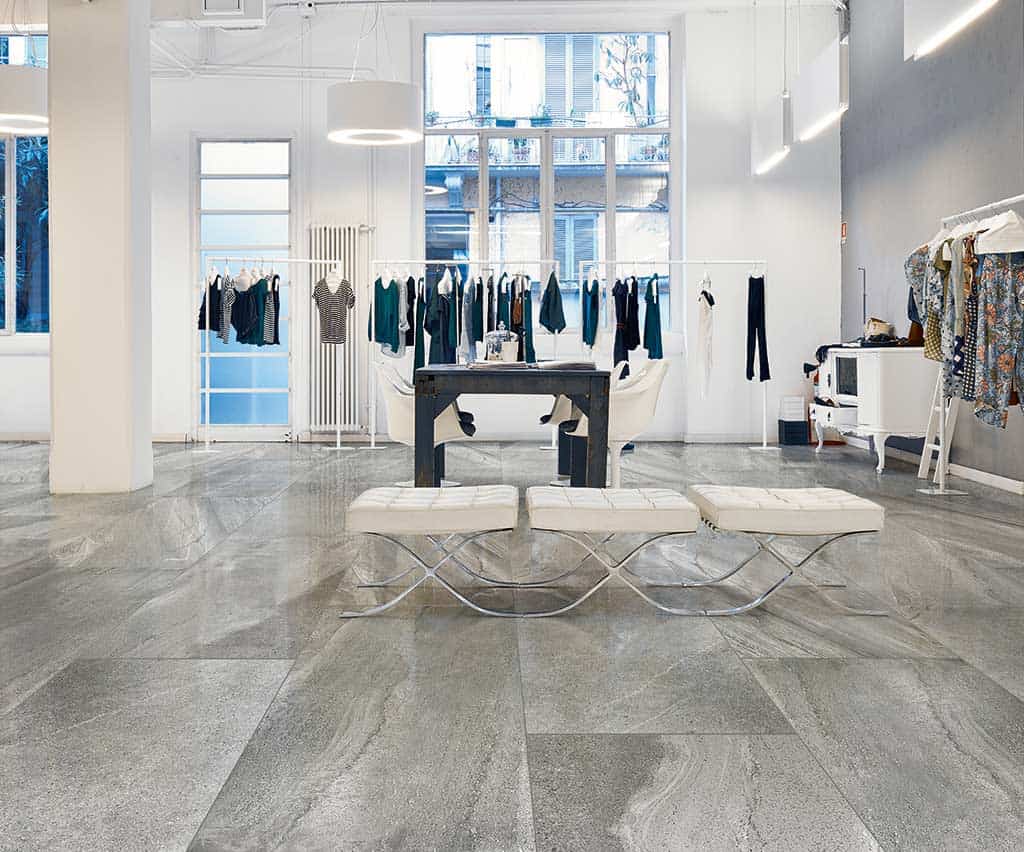
Photo via Florim
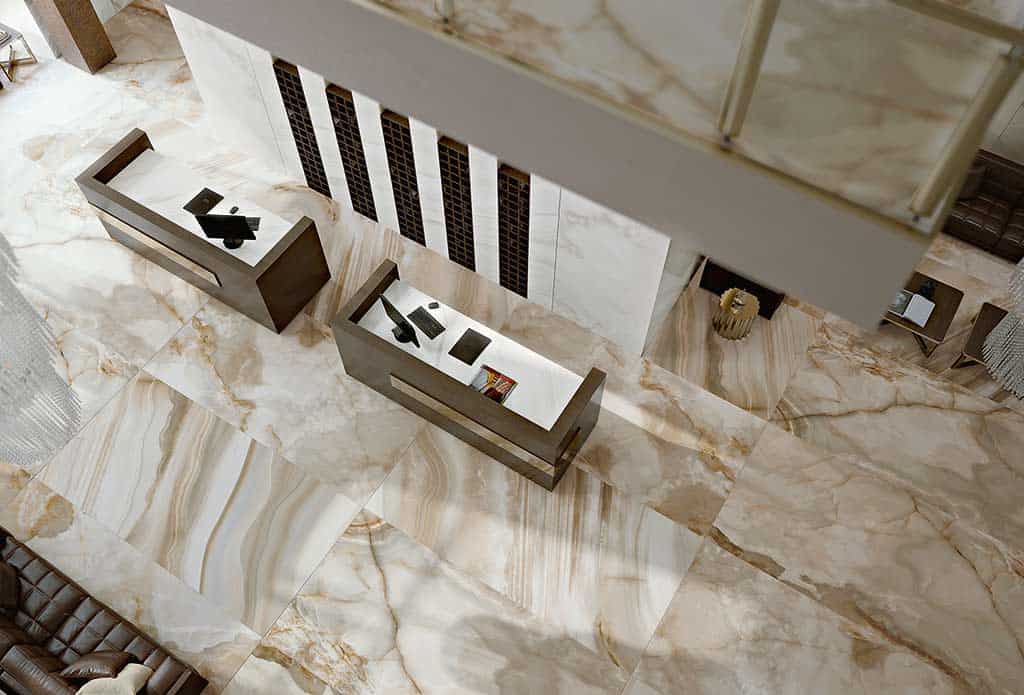
Photo Via Florim
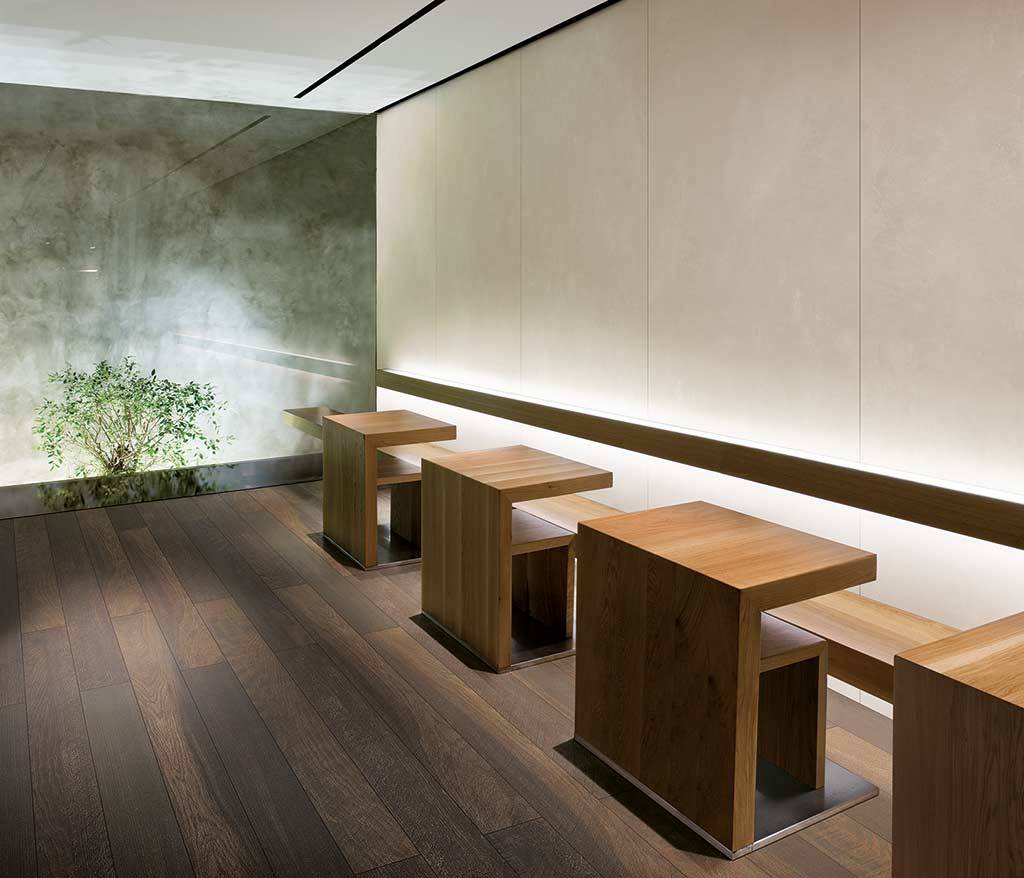
Photo Via Florim
Hardwood (Solid or Engineered)
Hardwoods are commonly used in retail, museums, sports facilities, and more. Businesses typically choose hardwood for its durability, resiliency, and timeless, natural aesthetics. Design wise, there are many different grains that can work for a variety of commercial spaces, and hardwood installation can be endlessly customized to create a unique look and set the proper tone/mood.
Hardwood is hygienic and hypoallergenic because it resists dust buildup and doesn’t harbor microorganisms, mold, animal dander or mildew. Additionally, when walked upon regularly, wood flooring causes less fatigue. But, it does usually require regular maintenance, like sweeping and polishing. While engineered hardwood is typically cheaper and more durable than solid, because it is made up of a thin slice of hardwood on a top of a base of high-quality plywood there is a limit on how many times it can be sanded and refinished. Extremely durable and low maintenance hardwoods are now available due to technological advancements– epoxy coatings, for example, can drastically increase the robustness of a hardwood floor. Some hardwood is easily damaged– depending on the hardness, moving furniture or dropping items can lead to scratches, scuffs, or indentions. Plus, wood doesn’t handle extreme changes in temperature or humidity well– it can shrink from excess heat or crack from dryness. Finally, wood isn’t waterproof, so it is more susceptible to moisture than other types of flooring.
It’s important to note that if you want to ensure your hardwood flooring is environmentally-friendly you must choose a refurbished wood or wood with an FSC certification that guarantees the material came from responsibly managed forests. Ultimately, hardwood floors are long lasting, can be recycled at the end of their life, and contribute to good indoor air quality. Though technically a type of grass, bamboo falls under the hardwood class and is also a great option for businesses because has anti-bacterial properties, it grows and replenishes itself quickly, and requires little fertilizer and pesticides to grow.
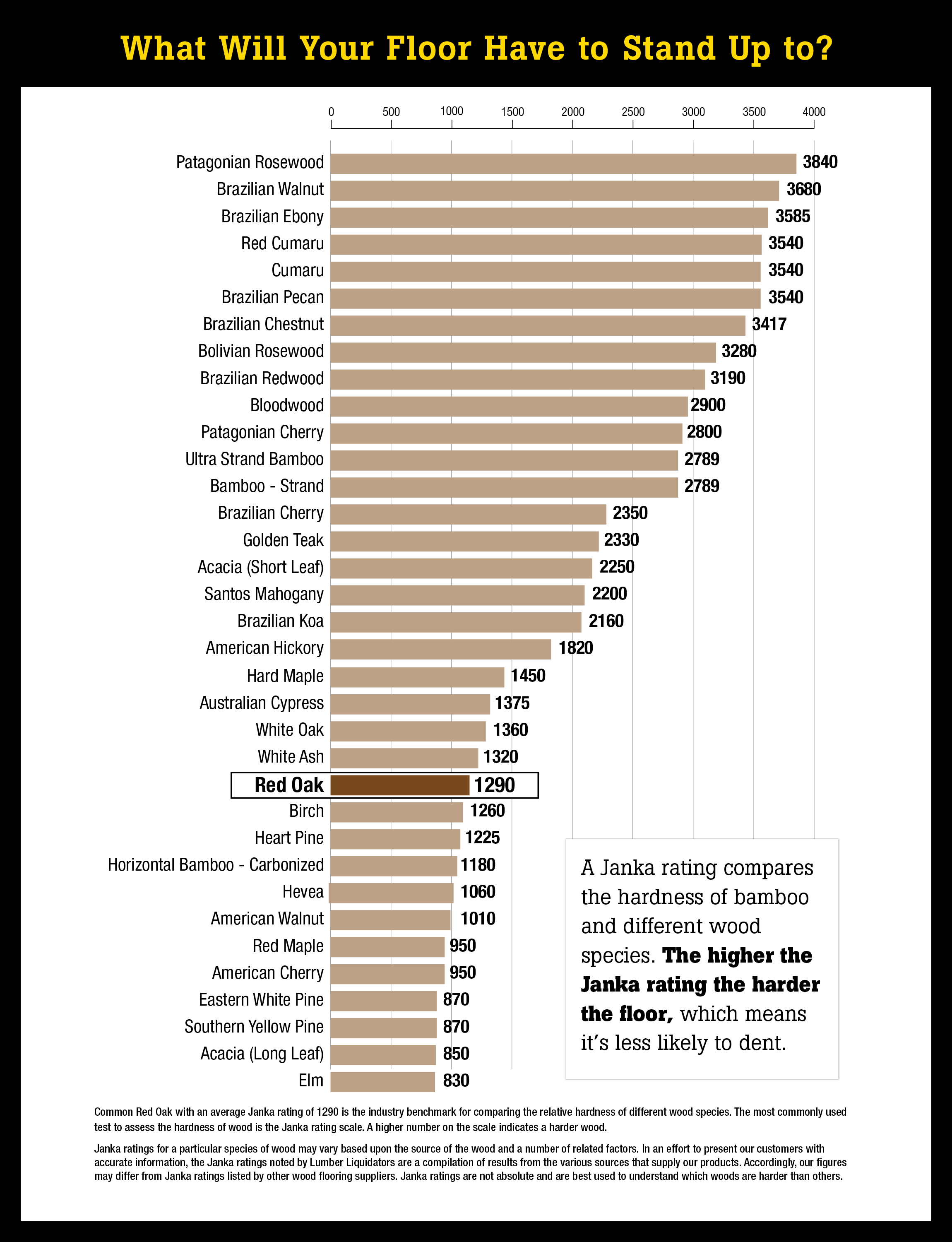
Photo via Lumber Liquidators

Photo via Brandsen Floors
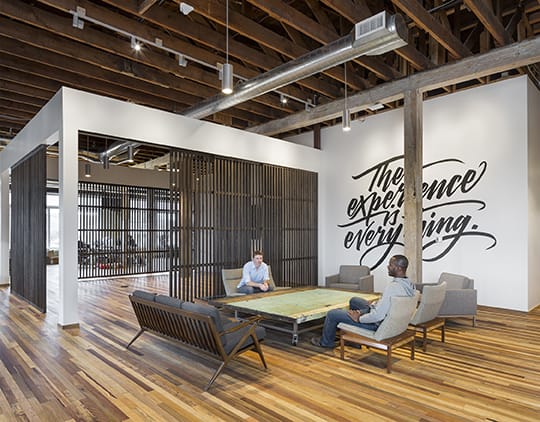
Photo via Brandsen Floors
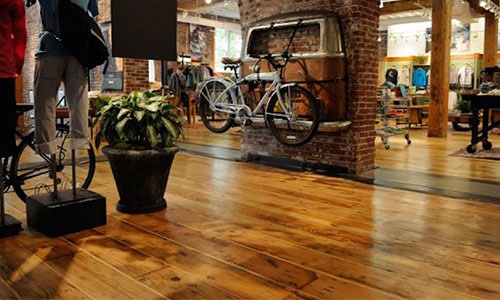
Photo via Brandsen Floors
Resilient
This category includes vinyl, linoleum, cork, rubber, and polymeric poured seamless floors.
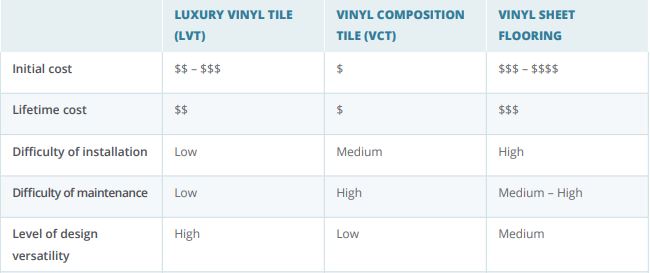
Via Spectra Contract Flooring
Photos via Tarkett
Photos via Tarkett
Vinyl
Vinyl flooring is used in many restaurants, hotels, and medical offices. It is low cost, durable, and can be made to look like hardwood or tile/stone. Vinyl, however, requires frequent vacuuming or sweeping so that small particles don’t damage it. Ultimately, you get what you pay for with vinyl– the least expensive options may not hold up to high-traffic. But, solid vinyl and vinyl composite tiles (VCT) are homogenous throughout the entire unit, so you don’t need to worry about them becoming faded through wear. Overall, most vinyl is very resistant to dents, moisture damage, and heat. VCT and seamless sheet vinyl are obvious choices for schools, warehouses, and healthcare settings. But, VCT requires regular waxing and polishing, resulting in higher long-term maintenance costs and it does have a cold, clinical aesthetic.
Luxury Vinyl Tile/Plank (LVT/LVP), which looks like high-end stone, ceramic, or hardwood, is a very popular vinyl choice for businesses. This option has many finishing options to chose from, including different textures, colors, and designs. Moreover, LVT has quicker installation than many of the materials it mimics and is less expensive. Eco-friendly LVT/LVP that is responsibly manufactured and certified for low VOC emissions is available. A major benefit of this type of flooring is the ability to replace single units that become damaged.
Rubber
Rubber is naturally slip resistant and shock absorbent. It comes in many colors, textures, and forms, (from tiles to planks) and can even be made of recycled tires. It can be great for high traffic areas that you want to be comfortable and quiet underfoot. Rubber is also commonly used as multi-functional flooring in gyms, yoga studios, and other sports facilities. One drawback is that it does have a distinctive odor that eventually goes away. Also, rubber tiles are not suitable for an environment exposed to moisture because water can seep through the seams. Rubber can improve the r-value of a floor, reducing energy bills, and its recyclability further adds to its sustainable nature.
Linoleum
While not as cheap as vinyl, linoleum is actually a green choice because it is made of natural materials (linseed oil, cork dust, wood flour, rosin, limestone, and eco-friendly pigments). This type of flooring can last forty years or more if properly maintained. However, it does show traffic wear patterns, scuffs, and gouges.
Polymeric Poured
Polymer coatings that are painted onto a floor are good for floors in good condition, since they may not hide certain imperfections. Polymer slurries, on the other hand, are good for non-slip needs but aren’t as shock resistant. Because polymer mortar is thicker it can fill in damaged areas of substrate, but it is more expensive. A less aesthetic option is polymer cement, which provides peerless thermal, moisture, and chemical resistance. Here are some of the different polymer types:
- Polyaspartic: quick drying and performs well where moisture is an issue.
- Epoxy: versatile, flexible, glossy, and easy to mix with pigment.
- Concrete Epoxy: strong, flexible, high impact resistance, and low maintenance.
- (Poly)Urethane: economical, flexible, and very resistant to impact and scratches. Commonly found in veterinary offices, prisons, and walkways.
- Methyl Methacrylate (MMA): performs well under thermal extremes and dries quickly.
Carpet
Carpet can be a good option for businesses, such as hotels and offices, that require minimal noise and/or a warming presence. While not as durable as other options, if it is regularly vacuumed and spot/deep cleaned as needed, carpet can last a long time. Broadloom carpet can generate a lot of waste because comes in rolls which are cut to fit the rooms being carpeted. Unfortunately, carpet stains easily which means that modular carpet tiles, even though initially more expensive than broadloom, make a lot of sense because they can be replaced easily. Another downside to carpet is that it can retain odors and allergens. Carpet designs range from single-colored to mosaic, and carpet tiles can be square or uniquely shaped. Some carpet provides high underfoot comfort because it has a cushion backing, and there are even waterproof carpet tiles which make moisture and spills less of a challenge.
There are sustainable carpet options that are made with natural fibers (sisal, seagrass, jute, wool, recycled materials, etc.) and eco-friendly carpets that are made with low volatile organic compounds and non-toxic dye. The alternatives would be nylon, polyester, acrylic, and other materials.

Photo via Mohawk Group

Photo via Mohawk Group
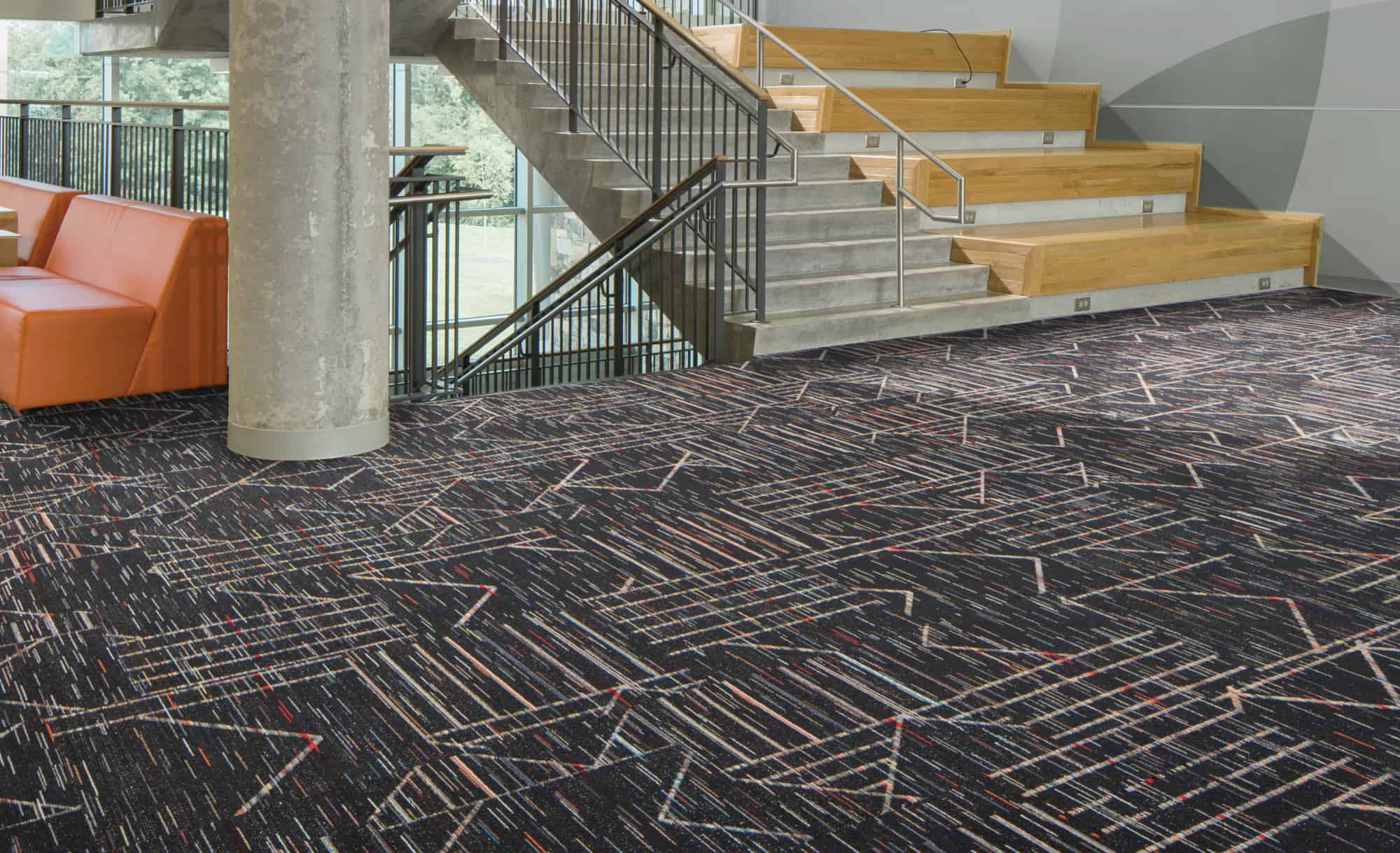
Photo via Mohawk Group

Photo via Mohawk Group
Conclusion
We know that selecting flooring for your new space or upgrading your flooring during a remodel can be a daunting task, so please reach out to us today with your flooring needs (call 480-832-9980). We would love to share our 20 plus years experience and knowledge in commercial flooring, while helping to find the optimal floor for your project. Although it’s impossible to cover all possible floor covering options in one article, the goal of this post was to provide some basic knowledge, inspiration, and ideas regarding what can be done with flooring in commercial spaces.
Sources
https://blog.millikencarpet.com/flooring-types-the-pros-and-cons-of-7-commercial-flooring-choices
https://primecoat.com/polymer-floor-coatings-quick-guide-easy-selection/
https://brandsenfloors.com/commercial-flooring-high-traffic/
http://blog.bostongarage.com/the-5-most-durable-commercial-flooring-options-for-high-traffic-areas
https://www.thespruce.com/uses-for-quarry-tile-1822628
https://www.wolfeflooring.com/commercial/stone/
https://www.flooring-professionals.com/flooring-resources/your-guide-to-different-flooring-types/

